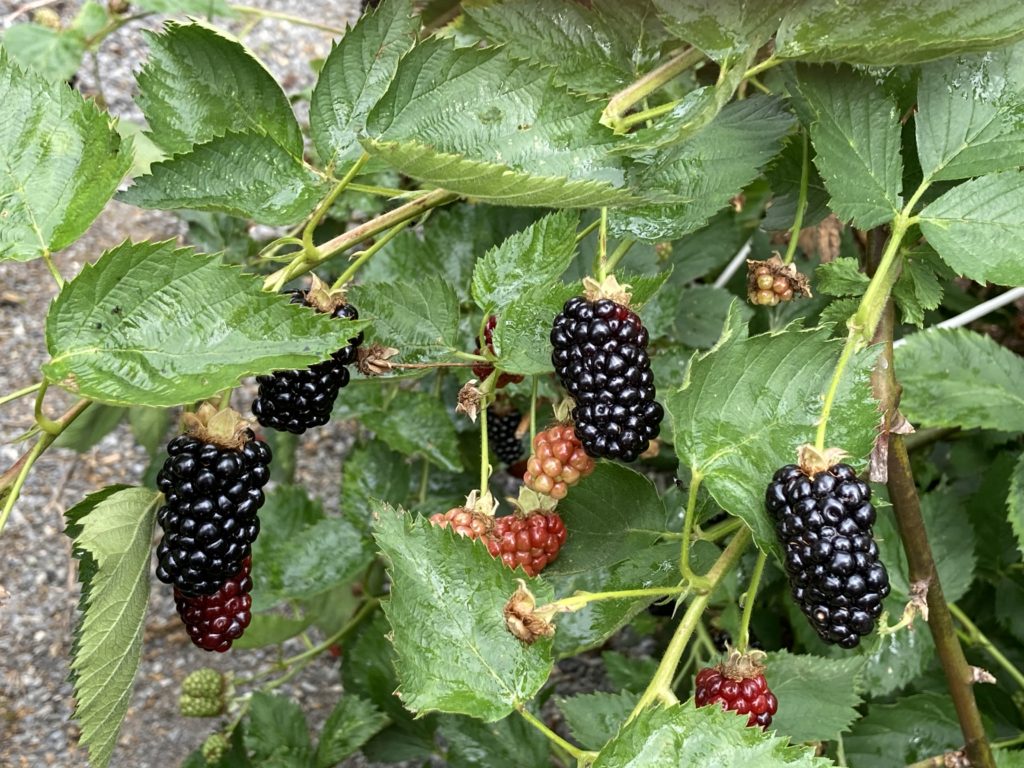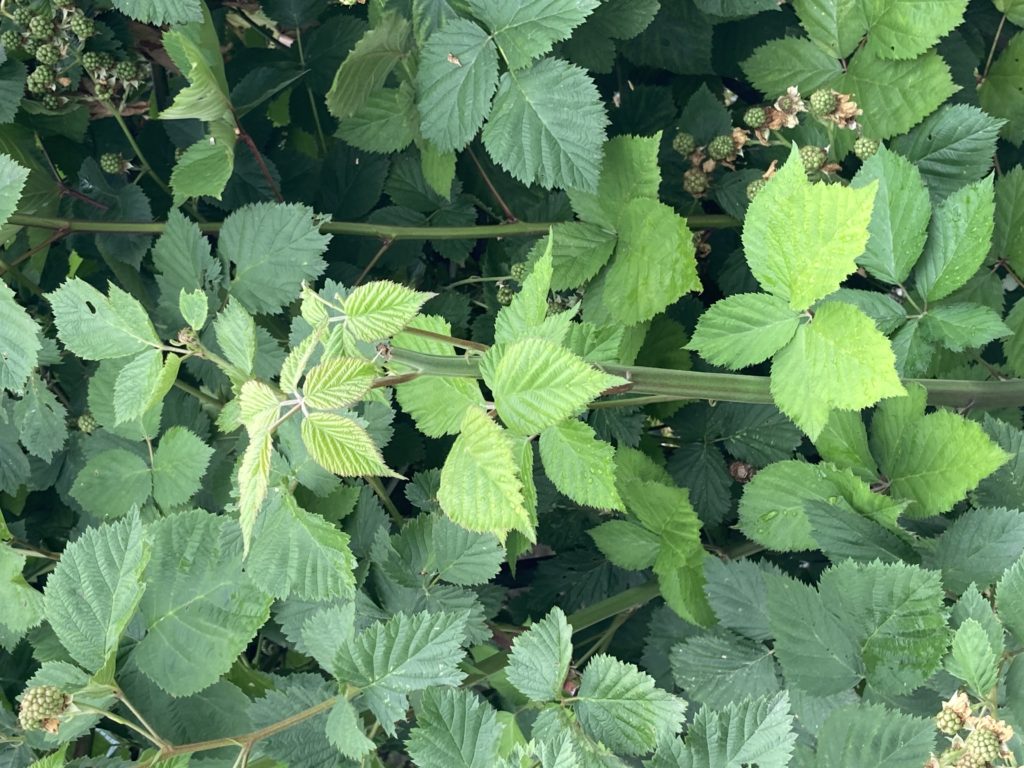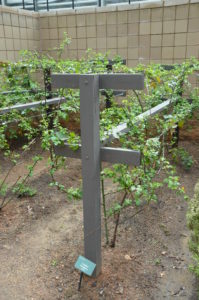Yummy blackberries from the garden excel in flavor compared to store-bought. To get the most out of a blackberry planting, select a full sun location with well-drained organically rich loamy soils. The site should be close to a water supply to get the planting off to a good start and to maximize berry size and numbers.
Ground preparation for perennial blackberries should begin a full year before planting to be weed-free with shallow cultivation and hand pulling as necessary. Mulch with wood chips, bark, pine needles, or composted leaves to prevent weeds, conserve soil moisture, and add organic matter. Disease and insect problems are rare if the patch is properly cared for. Inspect for cane borers (look for sawdust) every few weeks. A weedy blackberry patch attracts serious disease and pest problems over the life of the planting.
The crowns and roots of blackberry plants are perennial. Above ground shoots (canes) live only two years. Each spring blackberry plants produce more suckers from the crown and roots. In the first season vegetative canes (called “primocanes”) grow and go dormant during the winter. Beginning in year two last year’s primocanes, now called the “floracanes”, bloom and produce fruits; new vegetative primocanes emerge that will crop the next year.

For ease of care, blackberries (crowns) are typically grown in a hedgerow or trellis. Crowns should be planted a minimum of 3 – 4 feet apart in rows which are 6 to 8 feet or more apart. Thornless varieties are highly favored when harvesting and pruning off the last year’s bearing flora-canes in late winter. Blackberries start bearing in the second year and fully in the summer of year three.
One year-old canes are sold at local garden shops or from mail order nurseries on-line. Dormant blackberry canes are planted in late winter, usually in mid-April, when injury from damaging frost have diminished (USDA hardiness zones 5-9). Plants should be set at or near the same depth that they grew at the nursery. Firm soil around the roots and water. After planting prune canes back to 4-6 inches in height above the ground.

Blackberries are fertilized annually in mid-April with 1 pound of 10-10-10 or equivalent per 100 square feet of ground area. Apply half of the fertilizer in late March and a second equal amount 6-8 weeks later.
Cultivars: consult the land grant University in your state or the local Extension office. Recommended here in the mid-South (TN-VA): thornless varieties: ‘Triple Crown’, ‘Navaho’, ‘Arapaho’, ‘Black Satin’, and ‘Chester’.
Special Thank You to Mr. Ben Hunter in Kingsport, TN for information on growing blackberries


 Posted in
Posted in 
